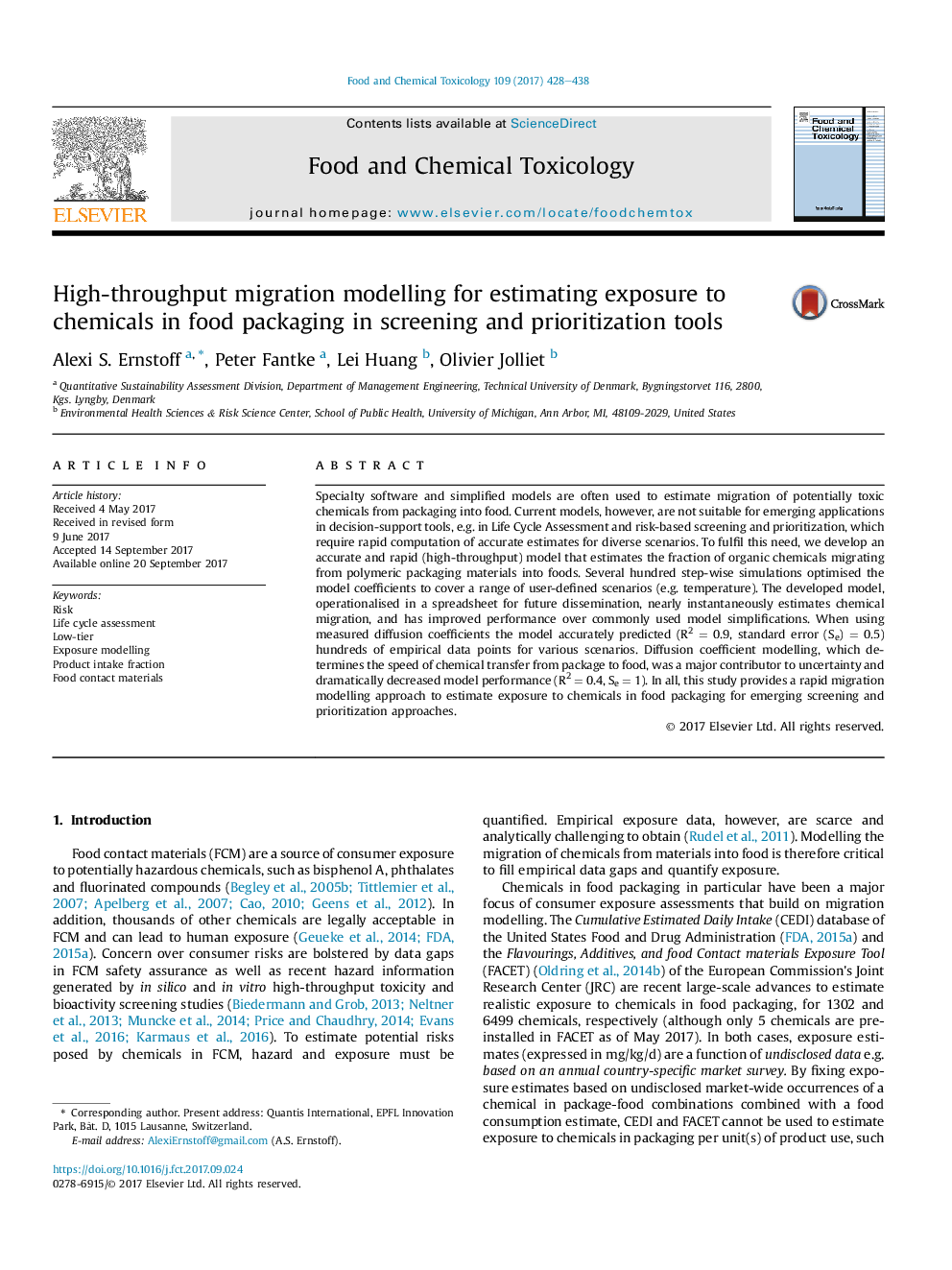| Article ID | Journal | Published Year | Pages | File Type |
|---|---|---|---|---|
| 5559986 | Food and Chemical Toxicology | 2017 | 11 Pages |
â¢A rapid and accurate migration model for chemicals in food packaging was developed for exposure screening and assessment.â¢The model estimates the product intake fraction due to transfer of organic chemicals in polymeric packaging to food.â¢The model is a function of packaging, food, and chemical aspects, as well as time and temperature.â¢The model performs well when compared to empirical data, but the diffusion coefficient estimation leads to uncertainty.â¢The model is available for dissemination in a spreadsheet to facilitate application in prioritization and screening tools.
Specialty software and simplified models are often used to estimate migration of potentially toxic chemicals from packaging into food. Current models, however, are not suitable for emerging applications in decision-support tools, e.g. in Life Cycle Assessment and risk-based screening and prioritization, which require rapid computation of accurate estimates for diverse scenarios. To fulfil this need, we develop an accurate and rapid (high-throughput) model that estimates the fraction of organic chemicals migrating from polymeric packaging materials into foods. Several hundred step-wise simulations optimised the model coefficients to cover a range of user-defined scenarios (e.g. temperature). The developed model, operationalised in a spreadsheet for future dissemination, nearly instantaneously estimates chemical migration, and has improved performance over commonly used model simplifications. When using measured diffusion coefficients the model accurately predicted (R2 = 0.9, standard error (Se) = 0.5) hundreds of empirical data points for various scenarios. Diffusion coefficient modelling, which determines the speed of chemical transfer from package to food, was a major contributor to uncertainty and dramatically decreased model performance (R2 = 0.4, Se = 1). In all, this study provides a rapid migration modelling approach to estimate exposure to chemicals in food packaging for emerging screening and prioritization approaches.
